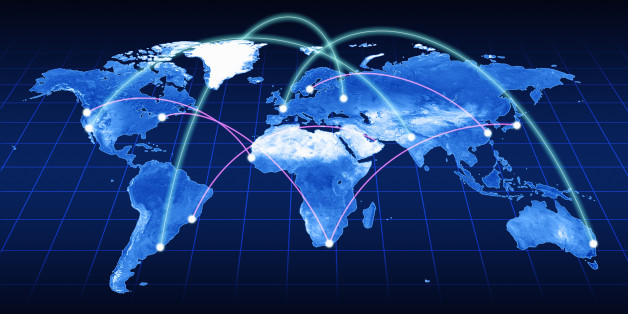One of the most interesting and hardest-to-describe things about local networks, as opposed to big-scale national ones, is exactly how they connect to the rest of the world. More than any other part of this project, the answer to these kinds of questions is “it depends!” In this post, I’m going to do my best to provide the long-form answer to this question and explain how things interconnect – in general, as well as our exact case in Bokondini.
Internet Access
The Internet was designed from the ground-up to be a decentralized “network of networks,” and this design makes it incredibly easy to add a network to the Internet: you pay an ISP for a connection, hook up a router to it, and you’re done! Though the scale’s a bit different, this process is pretty much identical, whether you’re hooking up a small home network or building a telecom company. This isn’t an exaggeration at all: small-scale regional ISPs literally just buy a super-fast Internet connection from a bigger ISP, the same way you do at home, and then divide and resell it to their local customer base.
In our case, the mountains around Bokondini are too rugged for traditional wired connections, so we’re using satellite Internet. Though it’ll cost us 300 USD/month for a 1Mbps connection (no joke!!!) and be pretty slow, it’s literally the only option we have.
Calls and Texts
So if hooking up to the Internet’s that easy, hooking up to the phone network’s probably similar, right? Wrong! It’s actually quite a process to register yourself as a phone network, and get assigned a block of phone numbers. This is the case for several overly-technical reasons, but the main one is that the Internet was designed to easily allow smaller networks to hook-in, whereas the telephone network (known as the PLMN, for Public-Land-Mobile-Network) grew up served by a much, much smaller number of operators. As a natural result, there’s no simple or easy system for a small network like ours to request a small set of numbers, mainly because that never happens. I’d love to learn more about this system and go through the process down the road, but for now, we currently do not have any plans to register our network in the PLMN.
Note that not having a PLMN hookup doesn’t actually affect our ability to support calling and texting, at least on a local scale. The nice thing about not being connected to the PLMN is that we can still assign our users whatever made up phone numbers they want, and we can still use these numbers for routing calls and texts within the network – we just can’t connect to the rest of the world.
Over-The-Top (OTT) Services
If hooking up to the Internet is easy, but hooking up to the phone network is hard… some of you might be thinking “why not just use the Internet for voice and text?” Great idea! In the cellular world, running voice and text over the data connection is known as “over the top” service provision, and it dramatically simplifies everything, for a number of reasons. Popular examples of over-the-top services include Skype, WhatsApp, Facebook Messenger, Google Voice, and many, many more.
There are tons of really good reasons to use OTT services: first off, they’re typically much cheaper than buying a phone plan. Second, all they need is Internet, so they work just fine over WiFi. Third, since the Internet was designed to be more decentralized than the PLMN, they don’t deal with issues like roaming.
Unfortunately, OTT services also have some drawbacks. First, whereas the telephone network is understood and supported worldwide, OTT services typically don’t interconnect with each other, which leads to complicated issues of fragmentation (i.e. you talk to John on WhatsApp, Matt on Skype, and Fred on Facebook) and a negative user experience. Second, in almost all OTT services, communication must be routed through the provider’s servers. This typically isn’t a huge problem in well-connected areas, but in our case, it means that a call from one user to another would go over that 1 Mbps satellite link twice for no good reason. Finally, and most importantly, since OTT services just do their own thing and don’t interconnect with the PLMN, they can’t support a lot of telephone-specific features such as emergency calls. This isn’t just unsafe, but actually has legal implications, and is why Skype has that big disclaimer saying “Skype is not a replacement for your phone and can’t be used for emergency calling.”
Bringing It All Together
Okay, so let’s recap: our network in Bokondini’s going to have a relatively slow and expensive satellite Internet connection. With this connection, our users can do anything they want: email, web surfing, etc. Additionally, our users can make phone calls and send texts to other users within the network, but can’t call anyone outside the network. Finally, our users can also use any Internet-based OTT services (WhatsApp, Skype, etc.) to call people outside the network.
